
Cartoon critics Phil Witte and Rex Hesner look behind the gags to debate what makes a cartoon tick. This week our intrepid critics take a look at Art Collecting.
A beautiful framed work of original art adds a touch of class to any home. For most of us, however, the frame generally costs more than the inexpensive poster it surrounds. Face it, collecting prized works of art requires a Fortune 500 bank account.
If you’re ready to take the art collecting plunge, the first step is making the rounds of emerging artists. In Michael Crawford’s cartoon, our prospective art owners narrow their choice.
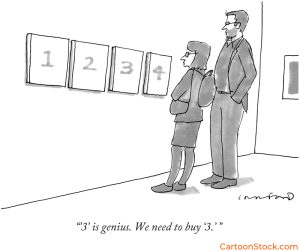
In the back of our minds, we feel a trifle uncertain about the aesthetics of the latest art trends. An artist’s garret if often filled with a confusing jumble of his or her latest oeuvre. But as Sam Gross portrays, that empty wall over the sofa needs to be filled!
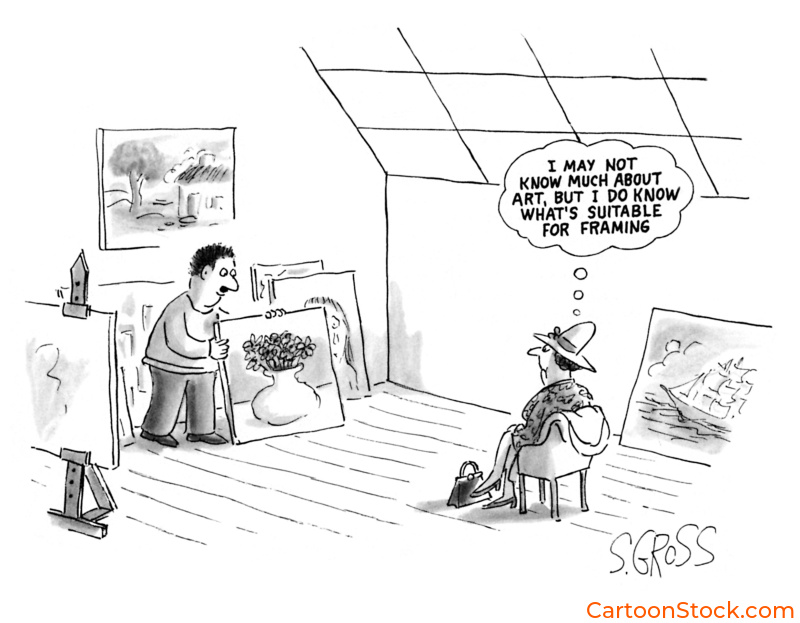
As one plunges deeper into collecting, new terms begin cropping up. Words like “provenance” enter your vocabulary. Paul Noth is aware the value of an artist’s work can increase if the artist led an exciting life … or suffered a mysterious death.
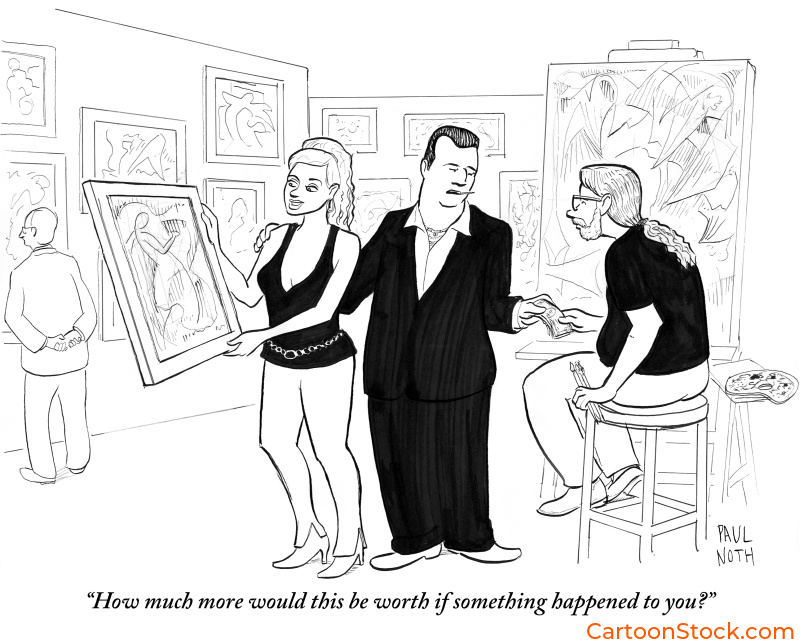
One way to acquire a famous painter’s work is to select a lesser piece from a period outside an artist’s prime. Even the greatest of collectible artists have their off days. The collector in Gahan Wilson’s scenario shot for the moon: an old Master.
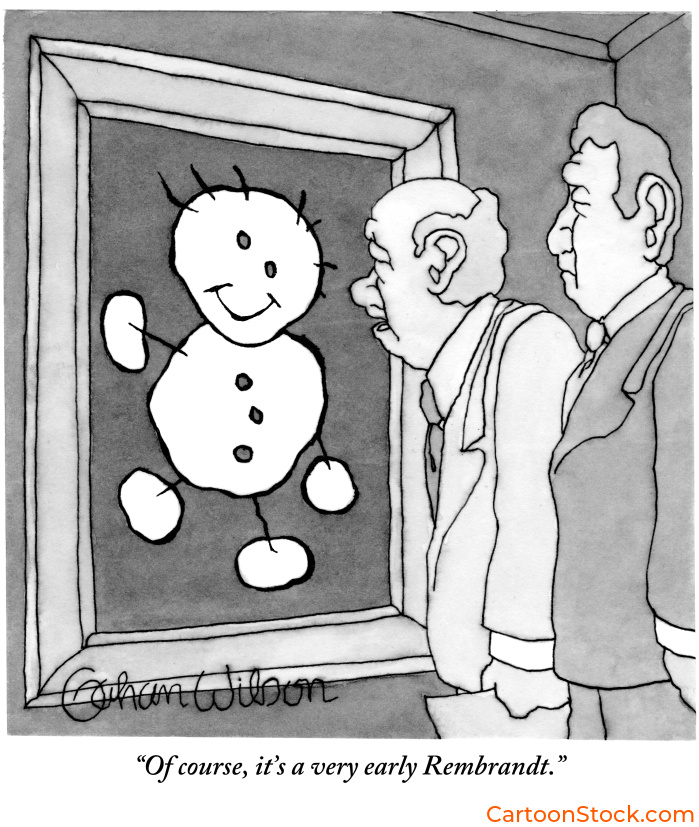
Of course, the biggest thrill is dazzling your guests with works of art from the most prominent names. Jeremy Nguyen’s collector takes a novel approach in his appreciation of a certain well-known cubist.
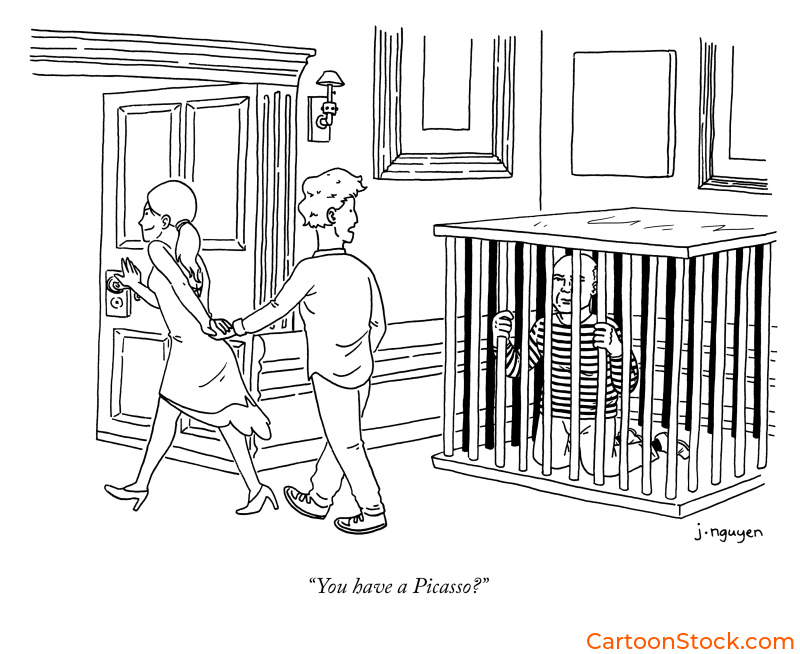
The haughty art world, with its white-glove auctions and quaint traditions, appears staid on the outside. The real art world—at the museum level—roils with forgeries, thefts, and trafficking. Leo Cullum imagines one buyer’s approach to a “hot” item.
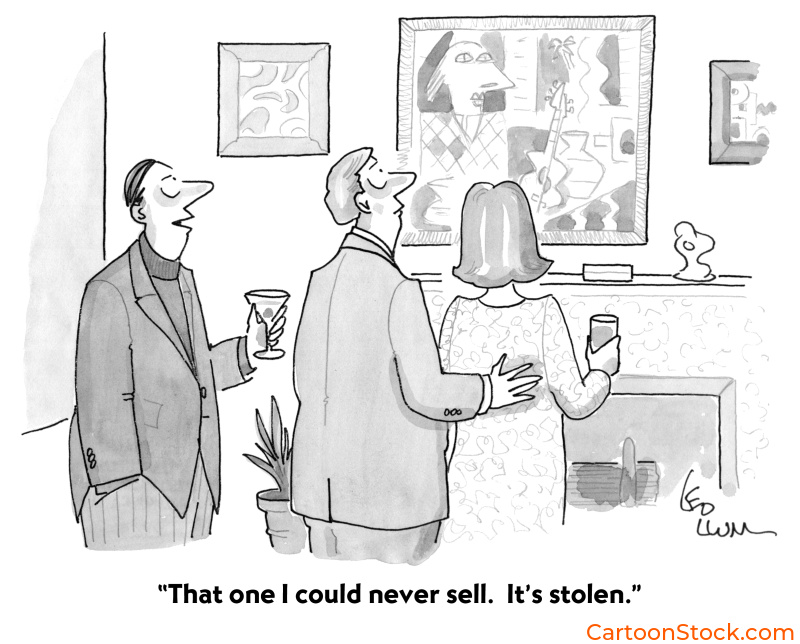
Art conversations brim with colorful terms often couched in another language. With practice, “chiaroscuro” can easily roll off your tongue to the astonishment of wealthy friends and influential art collectors. Jack Ziegler raises the stakes with a fancy French word for an optical illusion.
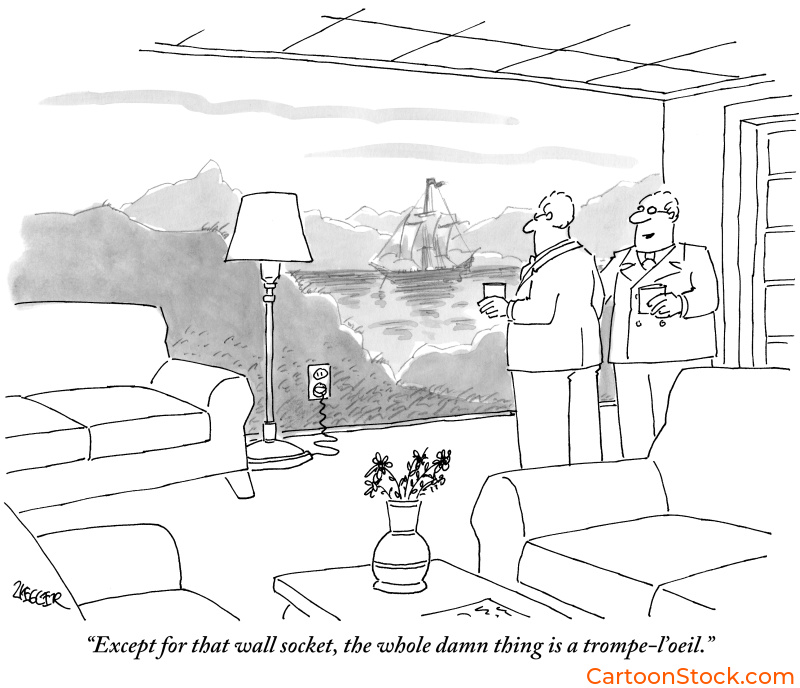
Competing to acquire a significant art piece in the open market must be thrilling. Then finally, after the auctioneer’s hammer falls, the artwork is brought home for display to the envy of friends and neighbors. And then what? Bruce Kaplan suspects it’s the reality of living with a masterpiece.
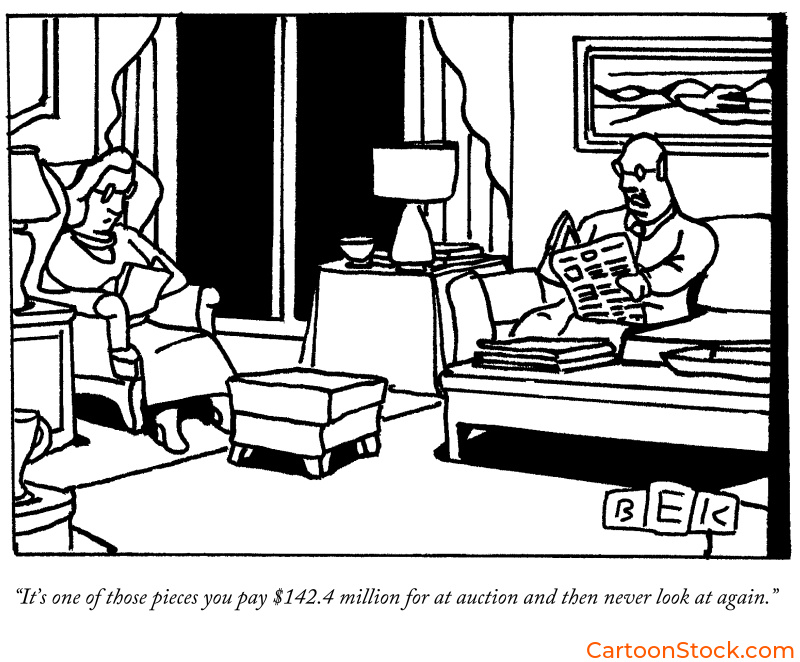
It takes two to tango, the saying goes, and that could also apply to home décor. But, as Jack Ziegler knows, tastes don’t always align in a couple, not even when one is a superhero. So perhaps there’s a solution?
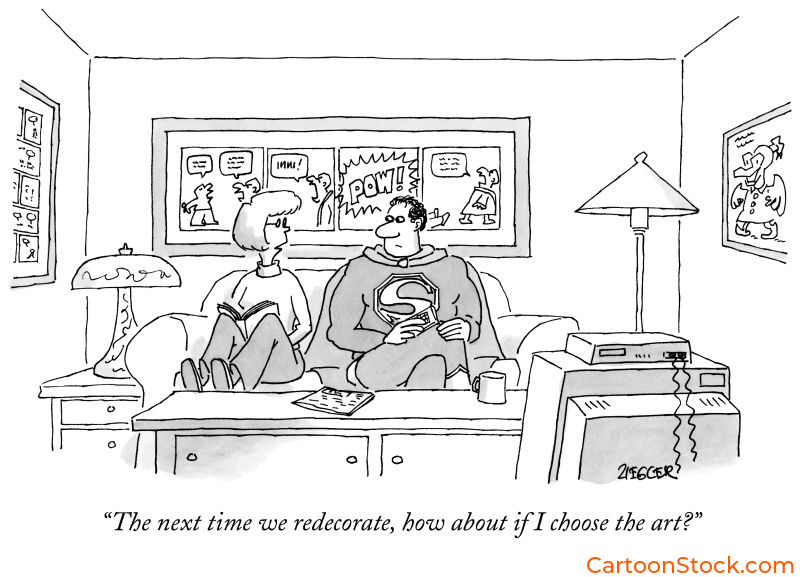
The desire to own a unique contribution to the world generally outstrips our ability to afford it. Museums and auction houses seldom have sales or offer discounts. The level of quality at street fairs or on Esty doesn’t quite measure up to our rarified tastes. Mick Stevens may have an answer.
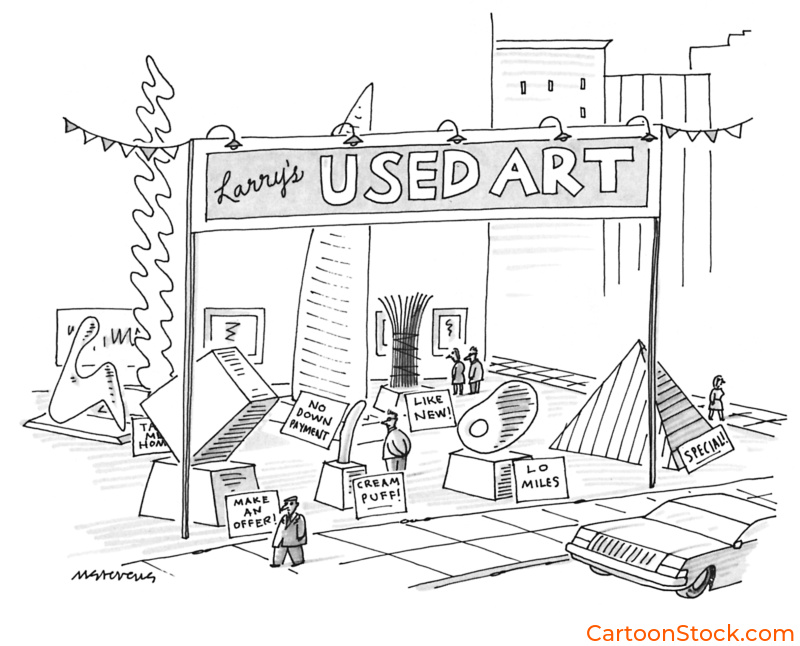
An often overlooked artwork source is right under our noses … our children! Yes, they produce a mountain of crafts every school year that eventually make their way into the home. For our final cartoon, Bruce Kaplan looks deeply into the psychology of this dynamic.


